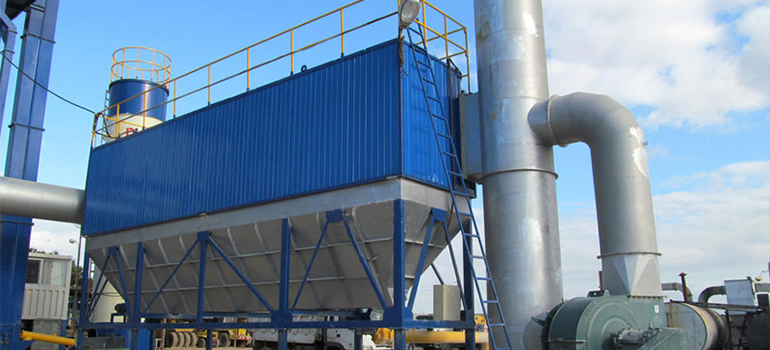Summary:
Dust removal machine play an important role in port loading and unloading.
How to select the right dust removal machine?
What is the dust removal system?
Application scope of the dust removal systems
What are the common problems when using the dry dust removal
Various methods like pressurized, wet, and dry sweeping as well as vacuum cleaning are used to control dust. However, each of these applications has specific advantages and disadvantages. The dust control system should be selected based on the expected results, budget, total floor area to be covered, the type of dust, expected wind velocity, and the number of people to be served.
Pressurized Sweeping System
This method is used for controlling small amounts of dust in an industrial environment. When using this method, the pressure sweeper has to be emptied frequently and it is quite expensive.
Wet Sweeping System
This method is used for controlling high concentrations of dust in an industrial environment. This system can be used to control all types of dust. For this, the floor has to be moistened with water to prevent any type of dust from floating in the air. However, the water used for wet sweeping has to be free from hazardous chemicals such as chlorine and fluorine.
Dry Sweeping System
This system is used in areas where liquids are not allowed. The dry sweeping method uses a broom to agitate the dust, which moves it to a collection system. The dry sweeping method is used for controlling very fine dust particles which are highly hazardous to health. It is also used in areas with low to medium concentrations of dust. However, this method is not suitable for moist or oily surfaces.
Vacuum Sweeping System
This system is used in areas where liquids are not allowed. However, this method is suitable for small locations and it allows the use of water to control dust. The vacuuming system is used for controlling all types of dust particles and it provides the highest airflow among all systems.
Customized System
If the above-mentioned systems are not suitable for your location, you can opt for a customized solution. It is possible to combine the above-mentioned systems based on your requirements.
What is the dust removal machine?

A dust removal equipment is simply an appliance that controls the airflow in, around, and outside of the vacuum equipment. When you need to remove large amounts of dust from your environment, you simply need to connect the vacuum cleaner to the dust removal system using a standard flexible hose.
When selecting a dust removal system, you need to take into consideration the amount of vacuum cleaner power that your equipment can handle. The airflow generated by the dust removal system is directly proportional to the size of its fan and it will be determined by measuring the airflow in CFM or m3/min. Finally, you need to look at the connection between the dust removal system and the vacuum cleaner to determine whether you need standard hoses or if you require accessories.
A dust removal system can offer many advantages including minimizing contamination issues by controlling the airflow around your vacuum equipment. The ability to remove large particles without entering your business will save you money and time, as will minimize your overall cleanup costs.
A dust removal machine can also prevent the accumulation of airborne particles and humidity in enclosed spaces that may cause damage to your equipment. It also helps you minimize contamination issues by controlling the airflow around your vacuum equipment.
Some dust removal systems come with an additional cartridge filter. This is in addition to the HEPA filter and it makes sure that any fine dust particles in the air are also collected and disposed of.
Application scope of the dust removal systems
The dust removal machine can be used for various purposes. Some of the common applications are as follows:
- For collecting fine dust particles generated in the industry by using a vacuum cleaner
- For removing dust and dirt from the clothes and hair of people working in industries
- For removing particles of dust from the atmosphere in industrial environments
Note: This system is mainly used to collect fine dust particles. If you want to collect large particles of dust, you should use a cyclone.
The dust removal machine can be used to control other hazards such as carbon monoxide and other substances that might pose a health risk.
This system helps you to protect yourself from airborne contaminants. However, it is important to make sure that any additional safety equipment present in the facility is also used. This includes using a mask or respirators when you are sanding wood, for example.
What are the common problems when using the dry dust removal
There are some common problems with a dust removal system. Some of these include the following:
- The system is capable of handling fine dust particles only. Large dust particles are not collected by this system.
- The system can be quite expensive in comparison to other dust removal systems.
- The system cannot be used to collect dust particles suspended in the air. These dust particles should also be collected.
You should look for a dust removal system that offers the latest technology to ensure superior performance. This will make it easier to remove dust from your environment.
Conclusion
A industrial dust removal system is a comprehensive solution for environmental hygiene. It is essential to choose the right dust removal system that covers your requirements and budget. It is also important to be aware of the system’s limitations and advantages before making a purchase. Make sure you opt for a comprehensive and user-friendly system so that you can minimize your total cost of ownership.
You maybe interested in the following: What is the Screw Conveyor System Really All About?
